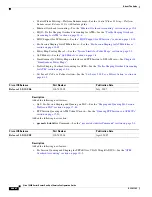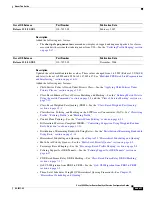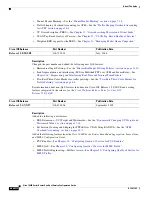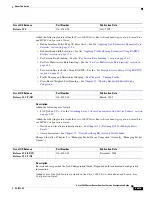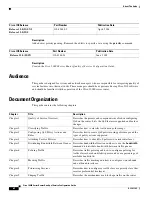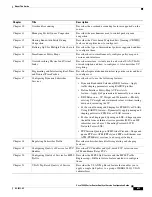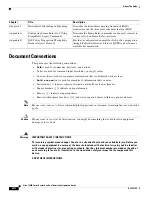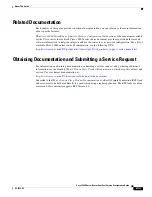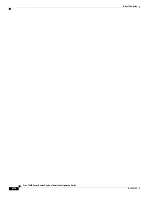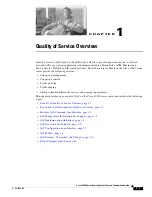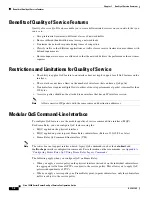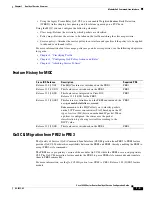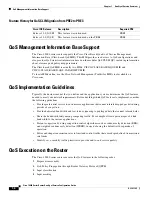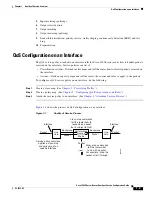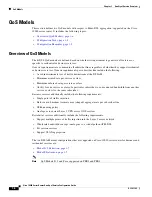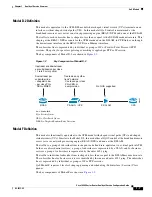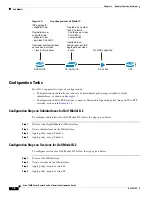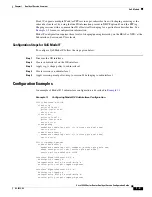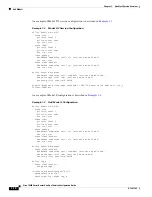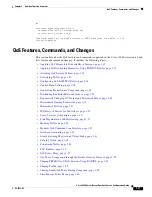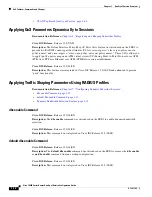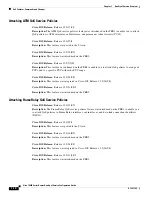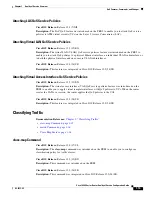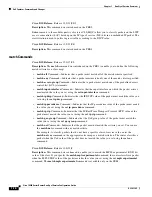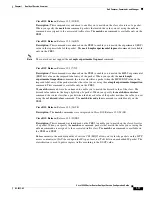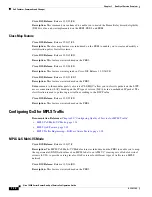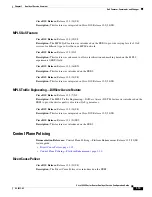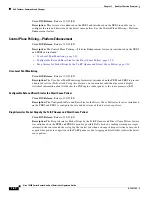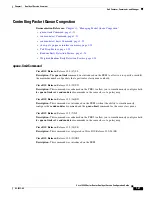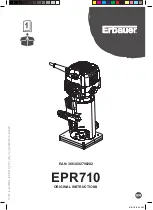
1-6
Cisco 10000 Series Router Quality of Service Configuration Guide
OL-7433-09
Chapter 1 Quality of Service Overview
QoS Models
QoS Models
This section defines two QoS models with respect to Ether-DSL aggregation, supported on the Cisco
10000 series router. It includes the following topics:
•
Overview of QoS Models, page 1-6
•
Configuration Tasks, page 1-8
•
Configuration Examples, page 1-9
Overview of QoS Models
The E-DSL QoS models are defined based on whether its requirement is generic to all services or
specific to residential or business services.
Generic
requirements are common to all subscriber lines regardless of whether they support residential
or business services. Generic requirements per subscriber line include the following:
•
Avoid indiscriminate loss of traffic downstream at the DSLAM
•
Minimum assured rate per service or class
•
Maximum enforced rate per service or class
•
Ability for one service or class of a particular subscriber to re-use unused bandwidth from another
service or class for the same subscriber.
Business
services additionally include the following requirements:
•
Single point of traffic injection
•
Enforce a sub modem train rate max (shaped) aggregate rate per subscriber line
•
Child queuing policy
•
Analogous to current Layer 3 VPN access QOS services
Residential
services additionally include the following requirements:
•
Support multiple points of traffic injection into the Layer 2 access network
•
Wholesale bandwidth concept –analogous to a virtual path in ATM-DSL
•
Per session services
•
Support VLAN aggregation
The two DSLAM model configurations that are supported on Cisco 10000 series router for business and
residential services are:
•
Model D.2 Definition, page 1-7
•
Model F Definition, page 1-7
Note
QoS Models D.2 and F are supported on PRE3 and PRE4.

